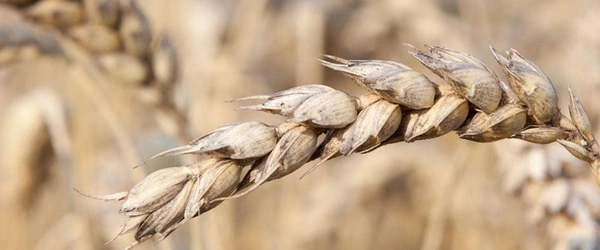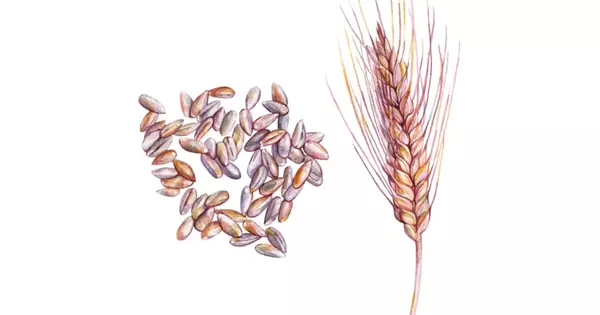Since the Neolithic Revolution, the evolution of wheat spikes has undergone significant changes. The Neolithic Revolution was a period of transition in human history, where human societies shifted from hunting and gathering to agriculture and the domestication of plants and animals. During this period, early farmers selected the most productive strains of wheat and used them to cultivate their fields. Over time, these strains evolved into new varieties of wheat that were better suited to local climates, soils, and farming practices.
Around 12,000 years ago, the Neolithic revolution radically altered the economy, diet, and structure of the first human societies in the Fertile Crescent of the Near East. With the introduction of cereal crops such as wheat and barley, as well as animal domestication, the first cities arose in a new social context marked by a productive economy. A study published in the journal Trends in Plant Science and co-led by the University of Barcelona, the Agrotecnio center, and the University of Lleida examine the evolution of wheat spikes since its cultivation began by the inhabitants of ancient Mesopotamia – the world’s cradle of agriculture – between the Tigris and the Euphrates.
The authors of the study are Rut Sánchez-Bragado and Josep Lluís Araus-Ortega, from the UB Faculty of Biology and Agrotecnio-UdL; Gustavo A. Slafer, ICREA researcher at the UdL School of Agrifood and Forestry Science and Engineering, and Gemma Molero, from the International Maize and Wheat Improvement Center in Mexico, currently a researcher at KWS Seeds Inc.
One of the most noticeable changes in the evolution of wheat spikes since the Neolithic Revolution is their size. Early varieties of wheat had smaller spikes with fewer grains, but over time, farmers selectively bred varieties that had larger spikes with more grains. This was desirable because larger spikes meant a greater yield, which was important for meeting the food needs of growing populations.
It is critical to conduct research to determine which wheat varieties are best adapted to various environmental growing conditions, particularly in the context of climate change. Retrospective historical research can provide insight into the evolution of wheat cultivation over the millennia since agriculture first appeared in ancient Mesopotamia.
Rut Sánchez-Bragado
A cereal that changed human history
Wheat cultivation, a grass that became a staple food, marked a watershed moment in human history. It is currently the world’s most important crop in terms of food security, but EU data warn that the impact of climate change could significantly increase its price and change its production process in certain parts of the world.
Wheat’s phenotype has changed rapidly (within a few hundred years) and slowly (over thousands of years), such as the weakening of the rachis, the increase in seed size, and the reduction or disappearance of the awns.
Awned and awnless wheat varieties are found all over the world, though the latter are more common in arid climates, particularly during the final stages of cultivation in late spring, a condition common in Mediterranean environments.
“It is critical to conduct research to determine which wheat varieties are best adapted to various environmental growing conditions, particularly in the context of climate change. Retrospective historical research can provide insight into the evolution of wheat cultivation over the millennia since agriculture first appeared in ancient Mesopotamia” says Rut Sánchez-Bragado, first author of the study and Ph.D. candidate at UB.

“Awns are organs of the spike that have traditionally been associated with the plant’s adaptations to drought conditions,” says Josep Lluís Araus, professor at the Department of Evolutionary Biology, Ecology and Environmental Sciences of the Faculty of Biology.
“However, archaeological and historical records show that the wheat spike has existed predominantly with awns for more than ten millennia after wheat domestication. It is not until the last millennium that evidence shows the absence of awns in many cases, indicating a selection by farmers — most likely unintentionally — against this organ “According to Clarivate Analytics’ Highly Cited Researchers, Araus is one of the most cited authors in the world (2022).
“Despite decades of research, the role of wheat awns in their performance remains controversial,” says corresponding author Gustavo A. Slafer.
Spike awns: beneficial for the plant?
Is the presence of awns on the spike beneficial for the plant and the crops? Although there is no scientific consensus, “everything suggests that in conditions where the plant does not suffer from water stress, the extra photosynthetic capacity of the awns does not compensate for other potential negative effects (reduced susceptibility to fungal diseases, limitation in the total number of large ones that an ear supports, etc.),” says Araus.
“However, in wetter climates, the awns can accumulate moisture and promote disease spread,” explains Rut Sánchez-Bragado. “As the world’s population continues to grow, it is necessary to investigate the role of awned spikes in changing climate conditions in order to meet global demand for a primary food commodity such as wheat.”
The spikes, including the awns, thrive in arid environments “have superior physiological characteristics to leaves. Furthermore, the awns allow the crop’s captured light to be more diffused, allowing for better distribution of light energy and increased photosynthesis. As a result, even in arid conditions, awns can be beneficial to crops or, at worst, neutral” Professor Josep Llus Araus comes to a close.
















